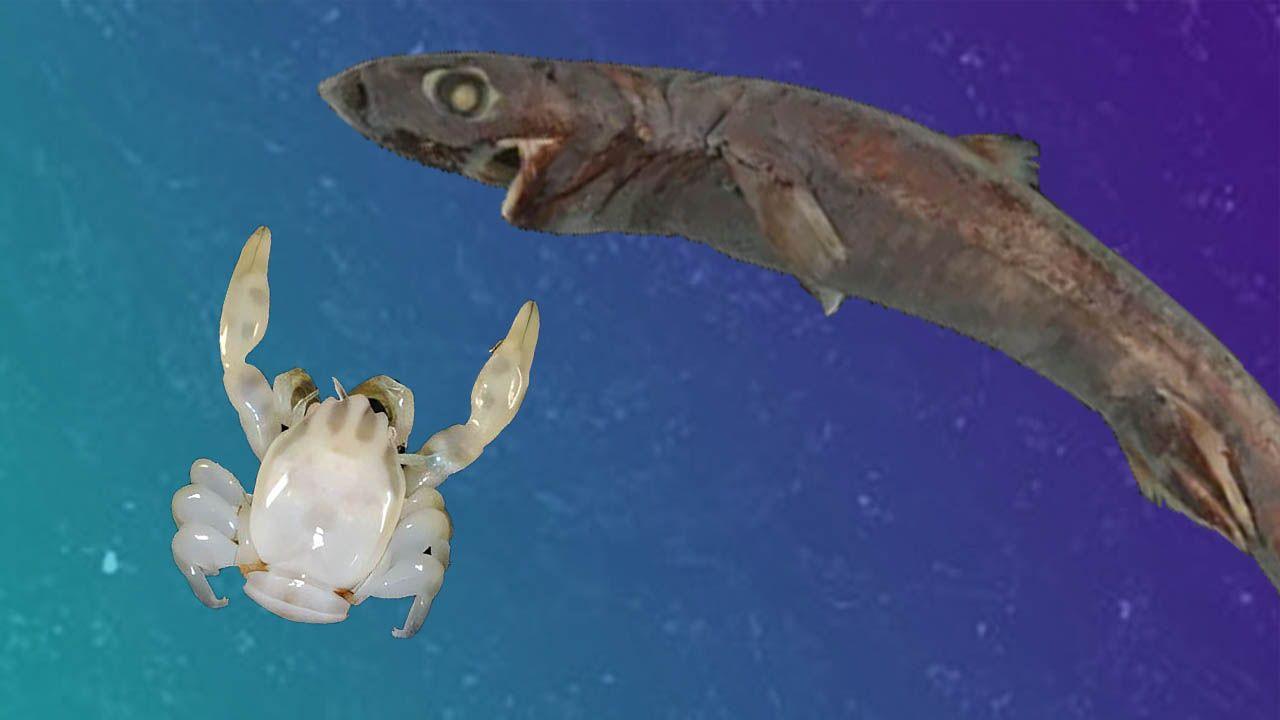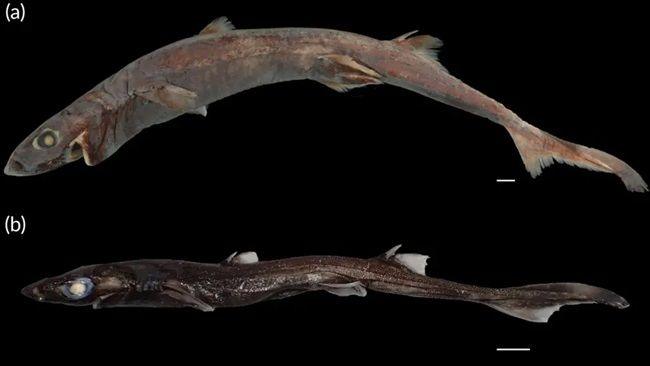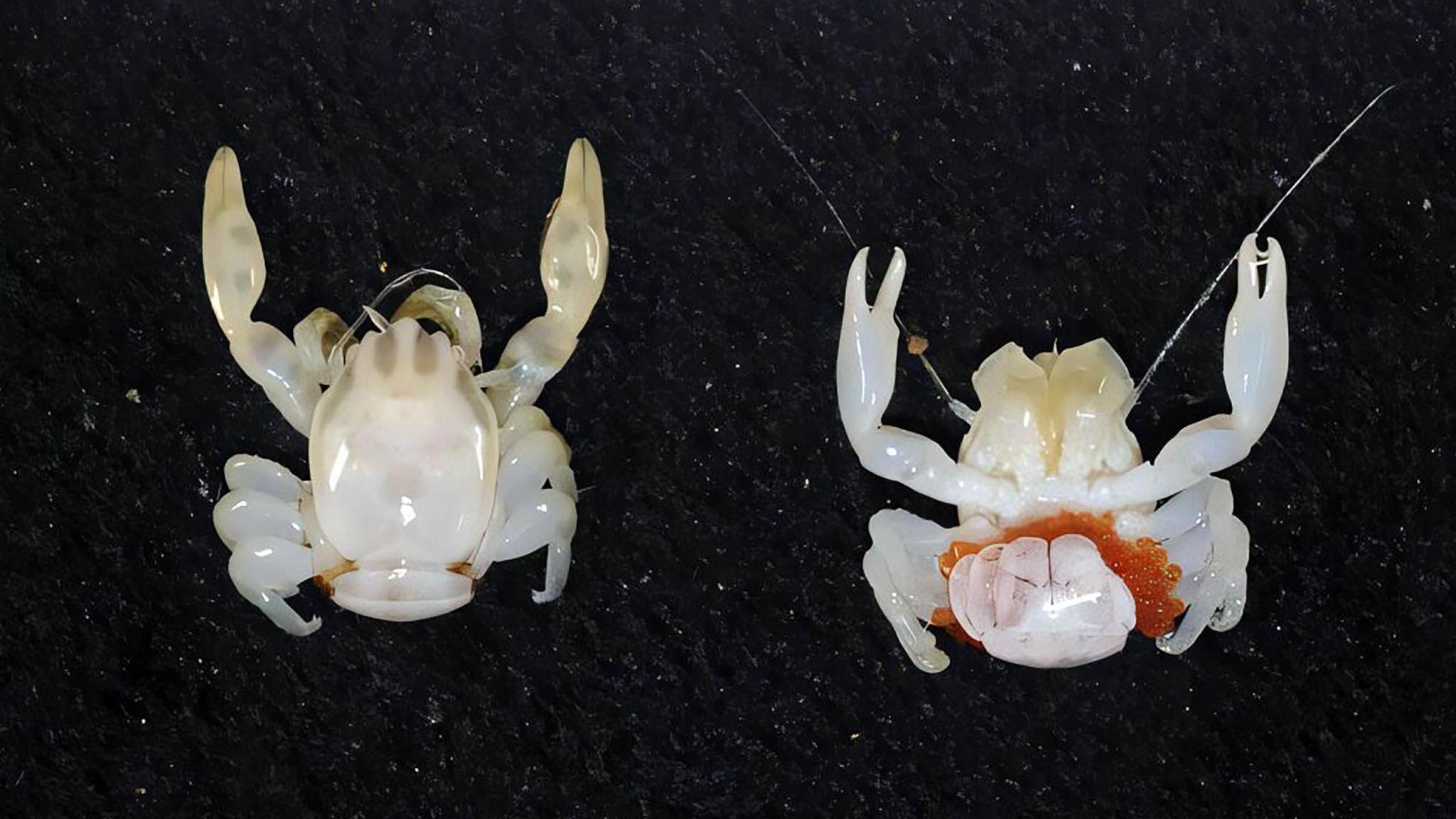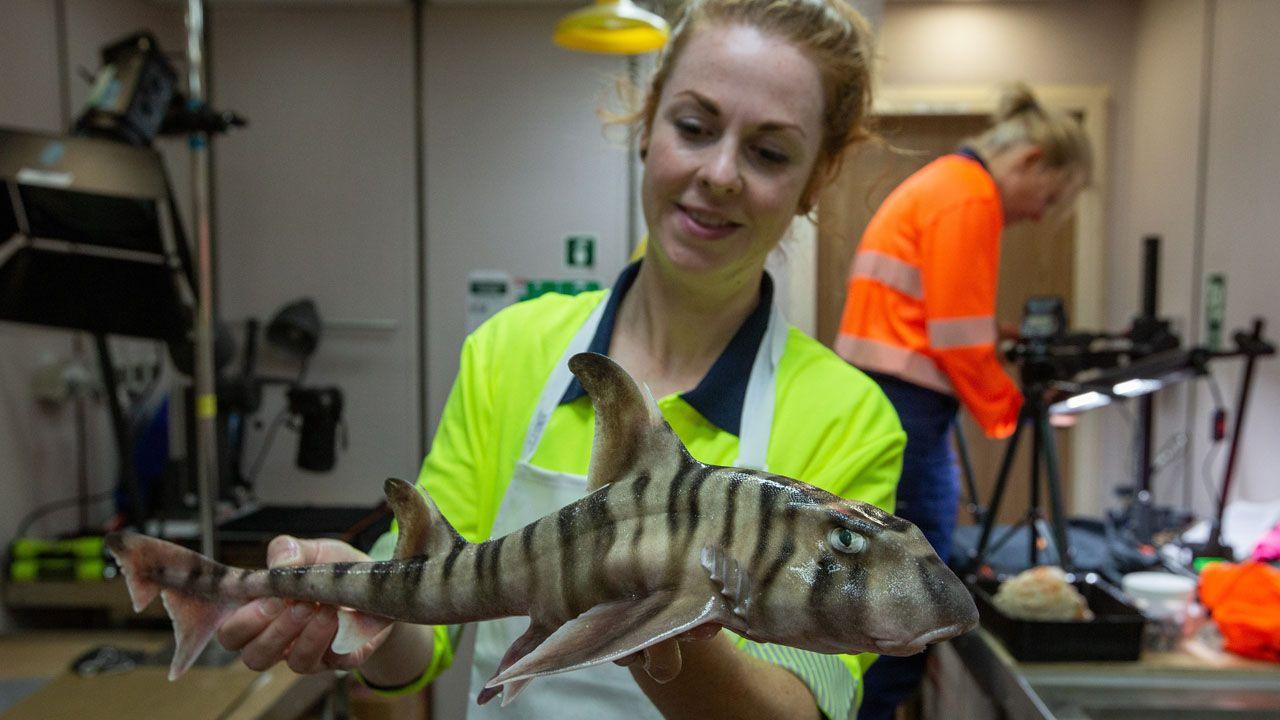New species of glowing shark and ghost-like crab discovered in the deep sea

These spoooky sea creatures have been discovered hundreds of metres under the sea!
- Published
A tiny glowing shark and a see-through crab have been discovered by Australian scientists in the deep sea.
The two new species were discovered as part of a big research mission by Australia's science agency CSIRO, back in 2022.
The team of researchers spent a month at sea exploring the Gascoyne Marine Park, off the coast of Western Australia, which stretches from around 15m to more than 5000m deep.
Since then, scientists have been looking at the hundreds of samples and research they gathered on the mission to help identify and learn about new species of plants and animals that are completely unknown to science.
Guitar sharks and squat lobsters: Meet the new sea discoveries
- Published13 March
New species of sea star discovered with 'snouts'
- Published23 June 2021
Strange life seen for first time in extreme depths of the ocean
- Published31 July
What have they discovered so far?

Glow-in-the-shark... this new species of lantern shark has a glowing belly!
So far around 20 new species have been discovered, including the Carnarvon flapjack octopus, sea stars, sharks, and a scorpion fish.
However, there are two new discoveries that have got scientists particularly excited.
A West Australian Lantern Shark and a new species of porcelain crab.
The new species of lantern shark is 40cm long - about the same length as a cat - and has large eyes and a glowing bioluminescent belly.
"Lantern sharks are bioluminescent, with light produced by photophores located on their belly and flanks, which is where their common name comes from," Dr Will White, a fish scientist, explained.
Researchers found it swimming at more than 600m below the ocean's surface.

Ghost in a shell - these see-through crabs are a new species
The researchers also discovered a new type of porcelain crab, which is semi-transparent, meaning you can sort of see-through it!
The little crab is around 1.5cm in length and was discovered about 122m below sea level.
Instead of using their claws to grab food, the crabs use tiny hairs on their body to catch food as it floats past.
It has a symbiotic relationship - which means both creatures benefit from working together - with sea pens, a type of soft coral that it lives on.
"Porcelain crabs are known as filter feeders, feeding on plankton by using modified mouthparts with long hairs to sweep the water for small pieces of food such as plankton, rather than the typical crab method of grabbing and pinching food with their claws," said Dr Andrew Hosie, curator of aquatic zoology from the Western Australian Museum.

This scientist is holding a recently described Painted Hornshark from the research mission
It can take scientists years to officially describe new species, because they must be able to prove that the animals do not exist elsewhere in the world by checking international databases, testing DNA samples and speaking to other scientists around the world.
The scientists think there could be around 600 more new species yet to be described and named from the 2022 mission - so plenty more discoveries could be on the way!
